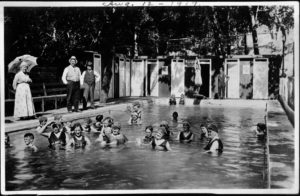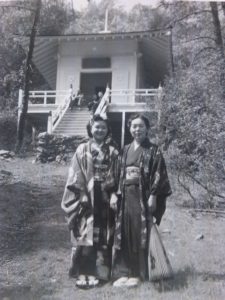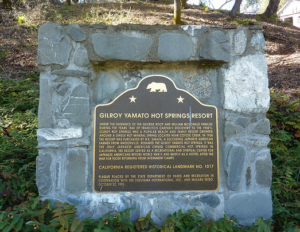A History Summary

Gilroy Hot Springs was discovered in the early 1860s by a Mexican shepherd and eventually ended up in the hands of George W. Roop. Roop turned the hot springs into a destination mineral water resort that was a featured stop along the Southern Pacific Railroad. In its heyday up to 500 visitors per day enjoyed 5-Star dining, luxury hotel accommodations, outdoor and indoor activities including hunting, horseback riding, hiking, fishing, shuffleboard, croquet, music, dancing, parlor games, and more.

This first chapter of the hot springs ended with the closure of the resort during the great depression in the 1930’s. Kyuzaburo Sakata purchased the property in 1938. Through a twist of fate and also good planning, Sakata survived both the WWII Japanese American internment camps and maintained ownership of the hot springs. After WWII, the site became home to 150 Japanese Americans released from the internment camps with the support of the Government’s War Relocation Authority. Sakata re-opened the hot springs to the public as Gilroy Yamato Hot Springs in 1946 and operated it through 1966.
The hot springs were bought and sold by private owners for private use several times over the next decades. During this time unfortunately the hotel and clubhouse burned down and many of the other original structures were lost However in 1995, Gilroy Hot Springs was recognized as a national historic landmark with 22 contributing resources in the National Register of Historic Places. In 2003, California State Parks purchased the hot springs. Due to budget restrictions, the hot springs have remained closed to the public since.
